Hybrid Working with Cameron Fry, Liqui Group
As we emerged from the Covid pandemic did you question how, and where, you wanted to work? You certainly were not the only person to reassess their working life, many of us taking the opportunity to evolve from an office based worker to a hybrid worker.
We recently spoke with Cameron Fry, Creative Director and CEO at Liqui Group, about hybrid working. Liqui Contracts design and manufacture commercial furniture and lighting for architects and clients engaged in projects around the world. Liqui® Contracts forms part of Liqui® Group Ltd, which was initially started Cameron in 2007 with the aim of establishing a design practice with a multi-disciplined approach.
[Find Liqui Group on Product Finder]
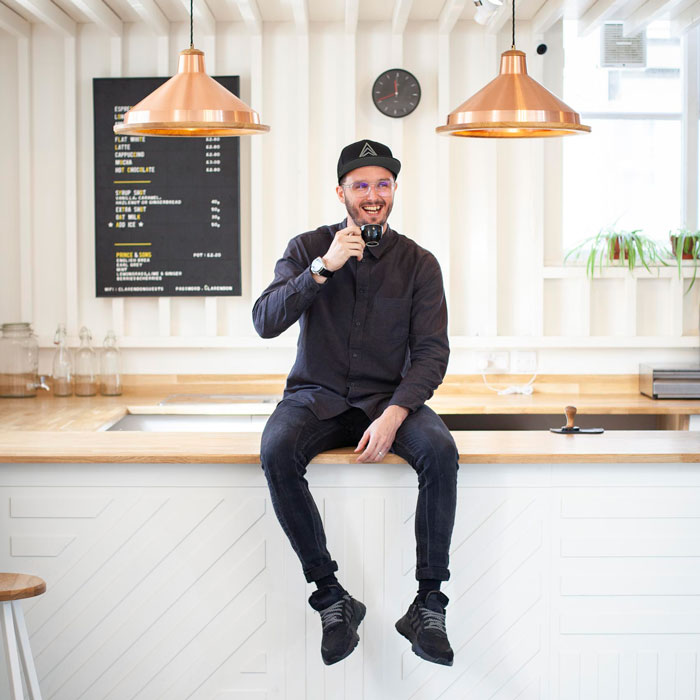
Please can you begin by introducing yourself and your role within Liqui Group?
I am the founder and creative director of Liqui Group, a multi-disciplined design and manufacturing company based here in the UK. My main role within the business is creative direction in both our product offering as well as our interior design department.
Is hybrid working new thinking, or an old repackaged idea?
I think it’s a bit of both. I think it’s something that companies have been playing around with over the last decade, with a lesser or greater success rate. But really, the pandemic has highlighted how it can work and also accelerated a lot of the technology behind it, where companies push their products faster, like zoom for example – which has made it much easier for people to communicate in the office whilst they’re not with each other. It also highlighted the other side of hybrid which is about being in the workplace some days of the week because you need that
interaction and face to face communication for some of the more difficult conversations, or if you’re working on a big project and there’s a lot of people in the room, there isn’t really a platform yet that has worked that well and I don’t think there will be, as it’s part of human nature to need to be able to see instant changing facial expressions, body language etc.
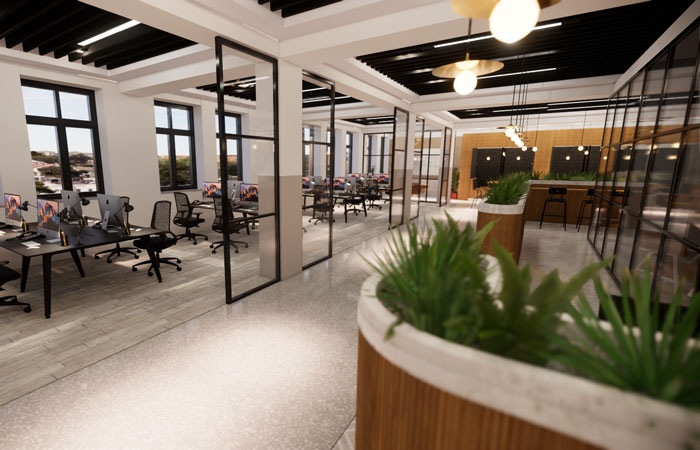
Having various spaces for different modes of work is key to productive work and employee well-being. What part do the acoustics of a room or space play, and how can this be implemented from architectural design through to furnishing?
It plays an integral part. If you have really bad acoustics in a room It can be really echoey, which can make people feel quite uncomfortable. There’s been quite a few studies which we read up on when we started looking at well-being in the workplace and stuff as a focus for our practice and we found that it’s about getting a balance on the acoustics. I was lucky enough to spend some time with an acoustician who explained this. He said if you make a room too quiet i.e too many panels, so more absorption and no deflection, it can become quite an uncomfortable space. I don’t know if anyone tried to stand in a sound booth for example to record someone’s voice, it can be quite an uncomfortable place when you walk in there, it feels quite strange and your ears can’t adjust to it. So it’s not the case of making it as quiet as possible, like a library, because that can make people feel nervous and uncomfortable as well, because they feel like they can’t put their pen down without everyone hearing, so it’s about having a good balance. There’s some systems that are available on the market that even pipe white noise into the area which helps block sound travelling, like the human ear won’t pick it up as well, so if someone’s having a conversation a distance away, you won’t be able to pick up individual words etc so it stops people from distractions.
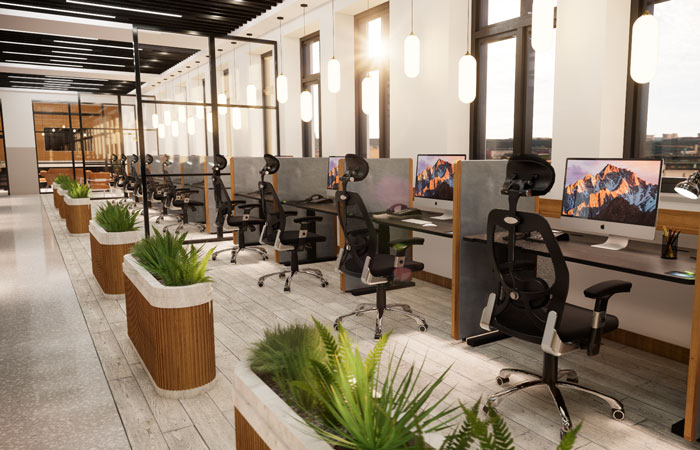
It’s the same with loud noises behind you, humans are just naturally distracted by that because it’s behind them – it’s like a safety response in their body, so it stops them from being able to concentrate on their work in front of them. So making sure all of this is taken into account with the acoustics in the room and also just positioning as well, where you’re going to have a lot of people in the room, you need to take these things into account. If it’s wrong, it can be a really horrible place to work and this has led to more days off, people leaving the business, just because of the office and the work environment isn’t a nice place to be, so it’s something that companies are definitely taking more seriously than they were before. How do we implement this as a design studio… we don’t want too many obvious acoustic panels around, so it’s about adding soft furnishings in where you can. We’ve been experimenting and are just about to launch a new acoustic light, so you can add to the ambience of the interior by having pendant lighting, as opposed to just architectural lighting, but also they have an acoustic value to them with some acoustic absorption. So we like it to be part of the built environment, rather than really obvious panels. You can see some offices have hanging panels down the ceiling which does a great job but it’s not particularly aesthetically pleasing.
How do you think the hybrid working structure is impacting the environment?
Good question. I suppose it’s the need for flexible spaces because people are coming in to the office for different reasons. The way it seems to be working with most of our clients, especially our larger clients, is that people are coming in to collaborate, because that’s the reason to be in the same building as each other rather than staying at your home office, so then you need a lot more collaboration spaces then you possibly needed before.
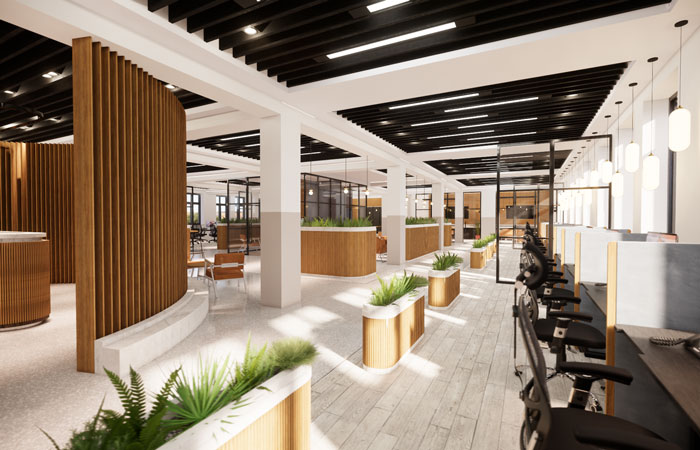
But you also do need hot desks because if the persons in for a three hour meeting, there’s no point them travelling in for that meeting and travelling back, they may as well serve a days work which is what most companies are making people do. So then you need, what we call ‘hotel desking’ and something which we implemented with a client recently is a booking system which is attached to all the desks, so if you’re going to turn up you can book out your desk for that day or the three days you’re going to be in, because you’ve got conferencing or client meetings for example, you want to make sure you have a desk. Something we also looked at which came up in surveys and discussions with clients as we came out of covid, was about the personal space not really existing if you take away someone’s personal desk, so we developed ideas about locker systems and lock away pedestals, which mean people can keep stuff like personal artefacts like pictures of their family and these can be locked away so when they are ‘hoteling’, whether that’s a day or more, they can quickly access those and put them out on their desk and make the space feel more like their own rather than feeling you’re in a glorified coffee shop.
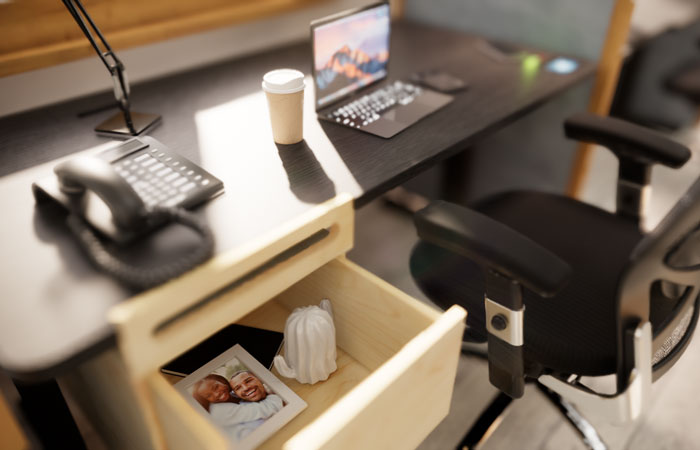
Having experienced that myself, it doesn’t feel that comfortable, so that’s why we went about trying to a figure out a way that could work, meaning people who work say three days a week in the office, which a lot of our clients are opting for that as their option to staff members, it means they can really land themselves on the desk and make it feel like their own and have those artefacts that make the feel more comfortable, more landed. Because again, hybrid working and well-being, only come together if the person enjoys both aspects of it, otherwise if their well-being is better at home because they feel more comfortable at home, then that’s fine. They need to then feel comfortable at work and vice versa. There’s some people that have real problems of working at home because of home situations, maybe their relationship is breaking down or they have kids that have a grandparent that looks after them in the house, it makes it incredibly difficult for the person to be at home, so you need to balance those two out. Obviously, employers don’t have the ability to control their home life, but they do have the ability to control their office life and that’s the bit we’re encouraging our clients to pay attention to, to make that space as usable as possible. Also a lot of our clients and a lot of the country have very long leases on these offices, so they need to attract people back in. Unfortunately this means they have no choice but to pay attention to this and make it a more inviting space, because there’s an awful lot of multi-million pound if not hundred million pound companies that have offices that you would not go to if you had the choice and that is being proven in the post-pandemic time.
What would you say are the 3 most important things to balance when designing hybrid working space? Do you have any examples on how this has been done by Liqui Group?
We would say there’s three main parts to any workspace and especially hybrid. You need to create spaces for collaborative working, spaces that someone can focus work i.e. their own desk space and then also spaces for socialising, because you want to keep team spirit etc up and that is something that’s been very hard to do through zoom etc. So, we would say these are the three most important one’s that we’ve been working on with our clients.
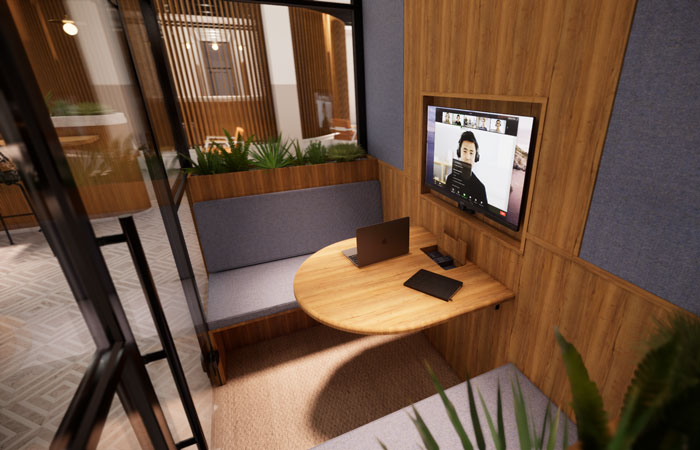
One of the examples of this is working with a very large company that has multi units across the UK and we’ve created the hotel design system, we’ve then tripled the amount of collaborative working spaces across their buildings and also we’ve introduced a proper canteen including working with them to find catering suppliers, meaning that it’s basically an onsite restaurant, rather than a canteen with a coffee machine and a vending machine which is what they had before. Again, it’s about attracting people back and encouraging dwell time in those spaces to encourage what we would call the ‘accidental meeting’. So what we want is the CEO to be sitting with their PA, grabbing a coffee and one of the executives that haven’t seen them in a week or so, walks past and says they haven’t seen them in a while etc. Steve Jobs was a massive advocate of this, way before his time as he was with most things. He would aim for a piazza, like you get in Italy, which would be the place where the community meets and crosses over to get to a place and he even got sued I believe for putting the toilets all on one side of the building to encourage everyone. The fact that everyone would have to walk across and come back and forwards to encourage those accidental meetings. It’s cross pollination of ideas, so for example if the finance department is on the top floor of the building, do they ever speak to sales? Well normally no, unless they have some sort of meeting planned or they do a yearly review or something like that. So the idea of having a really nice canteen/ restaurant in the building is that everyone should want to be there, especially if it’s subsidised for example, it means it’s better to go there instead of anywhere else and it draws people down and you have those accidental meetings/off chance encounters that can really spur on new thinking within a business. The RRI on this is very hard to measure, but some incredible ideas have come through accidental meetings that have been marked and I think that it’s important to try and build that into businesses and a lot of traditional, corporate companies haven’t done that very well over the last couple of decades, so I think it’s time that everyone paid attention to it and tried to build that in, so that when people are in the office, they’re giving maximum chance for people to collaborate/meet, whether that’s accidental or deliberate.
What do you think the future of hybrid working will look like?
I think we’re getting to what the future will be for a while now. I think that a lot of companies are adjusting their rules and regulations on it. Some people let their staff work from home and I think that might carry on, but a lot companies have suffered and had problems with that as well, so I think like all things in life it’s going to be a balance, so whether that’s calling people in for two/three days a week, or going down to a four day week where people work from home for two days and in the office for two days, some people will always be remote because it makes complete sense, or they’re a singular unit anyway… but I do think that and it’s been shown with clients, that if the office is not a nice place to be, they’re having real issues getting people to come back for meetings etc etc, people are wanting to call in because of the inconvenience of it, so I do think hybrid’s here to stay.
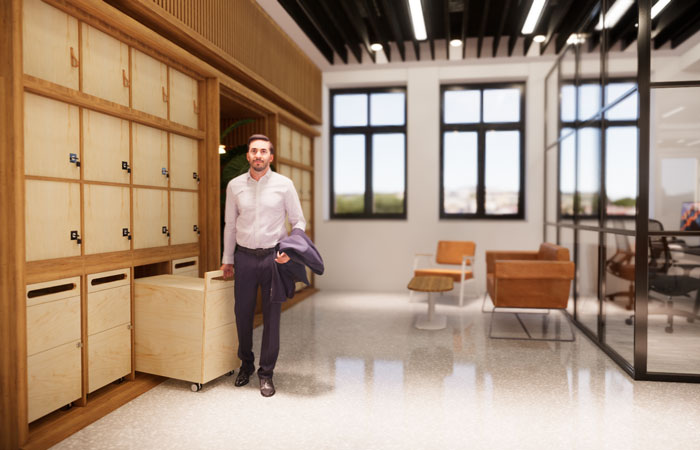
People moved a lot, so there’s a lot of people that have moved away from London for example, so the chances of them going in any more than two/three days a week is slim to none, they would probably rather leave their job and find something else. So I think it’s getting to where it’s going to stay for a while, but I must admit my opinion is there will be an increase in the amount of days that people will have to spend at work because I think there’s certain industries that need personal, one to one time and big group discussions which you just can’t do with technology.
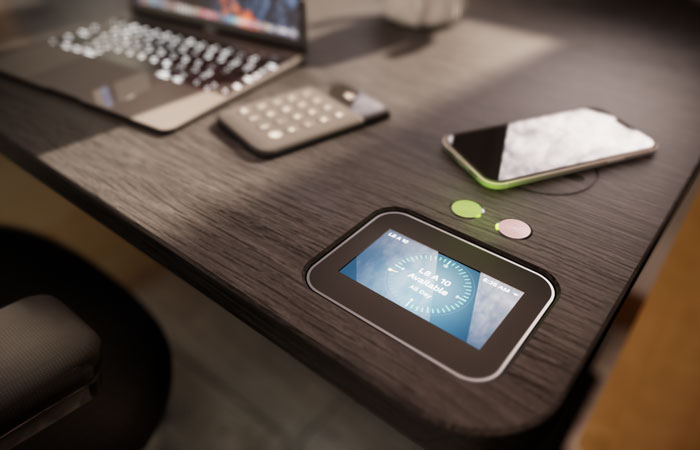
Whether the technology improves in leaps and bounds like it did because of covid and that allows us to have VR meetings easier, possibly… but I do think there’s an inherent human nature to it, and I don’t think it’s a bad thing. I think it’s unhealthy for humans to be siloed off by themselves even if they are in communication digitally, I just think it’s better for them to be able to meet with each other, it just needs to be convenient and lend itself to that work life balance, especially if you have children or dependents.
Contact Liqui Group through Product Finder
Product Finder enables Commercial Interior Designers to source products and services from accredited Commercial Suppliers. Search through over 200 UK suppliers, each showcasing newly launched products, projects, catalogues, films, sector research and much more.




